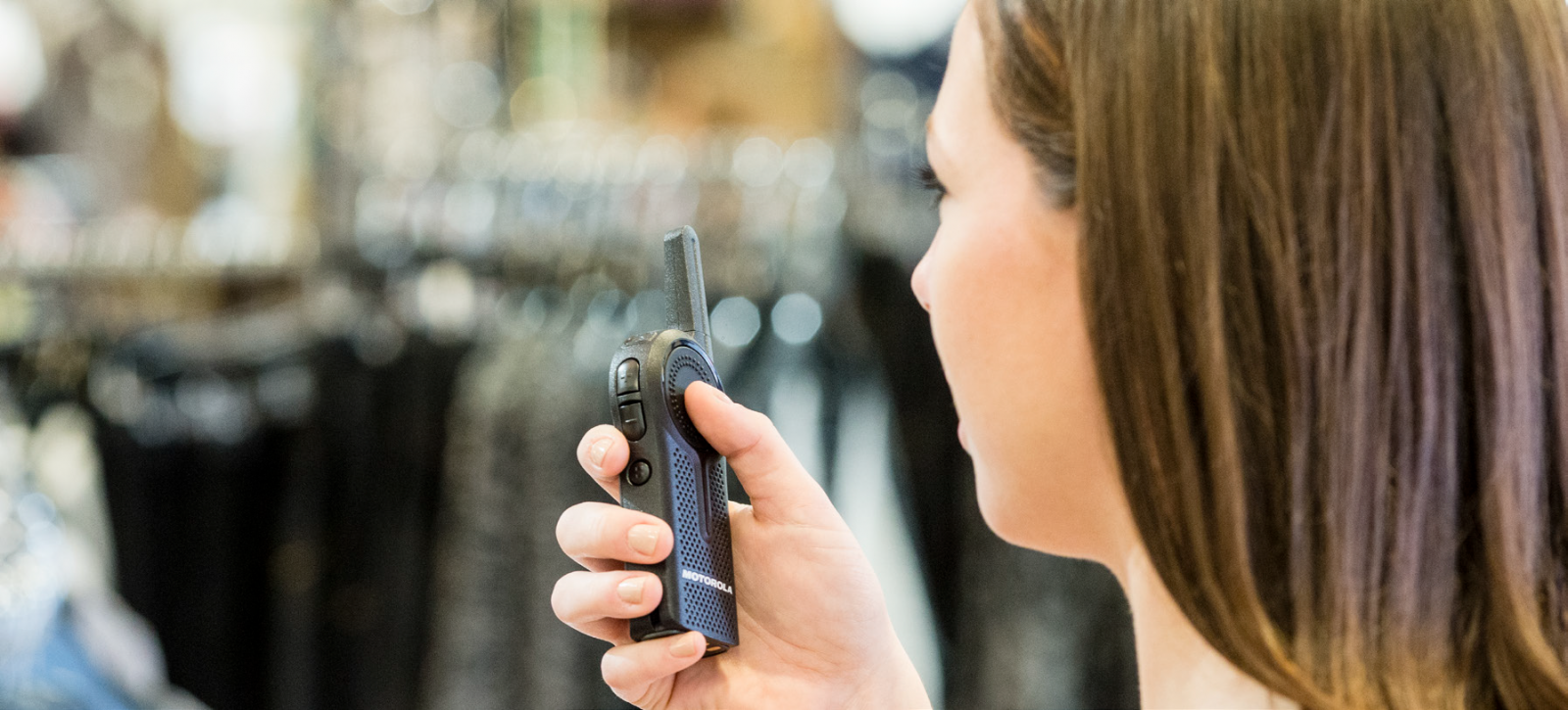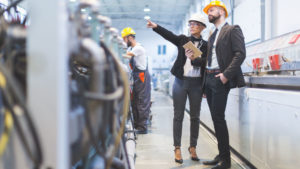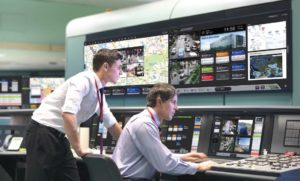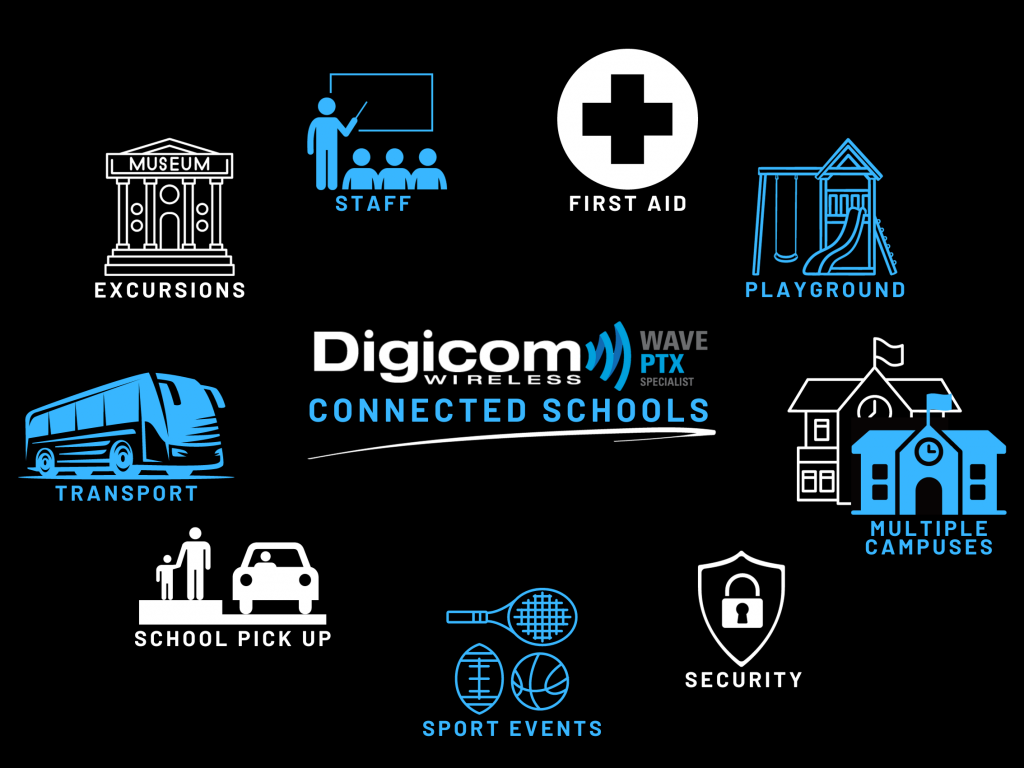Whilst the two-way radio has been in existence for nearly a hundred years, it really came into the mainstream in the middle of the 20th century. Today, two-way radios, also known as walkie-talkies or push-to-talk (PTT) radios, are used by a huge range of industries.
You’ll see these handy devices on construction sites, with first responder personnel and even at family camping trips. They’re ideal for places where mobile phones don’t get a signal or industries where your communication device could face potential impact.
Understanding the essentials of two-way radios will help you put yours to better use. First, know that these radios work in both directions, unlike standard radios that only transmit communication. With a walkie-talkie, you can both speak and hear other people. However, you can’t both talk at once like you can on a mobile phone. You have to take turns (see more on two-way radio etiquette below).
Routine two-way radio operation
Each industry requires a two-way radio for different uses, so it’s important to understand the basic functions and features. For construction projects, operators may only need to use a single channel, however public safety operations or large scale event coordination may need to use multiple channels. To ensure that your two-way radio system is being used efficiently, provide training for your staff before operation.
Also, be sure everyone understands any laws and company rules regarding the use of their radios, such as private channels and appropriate language. A good rule of thumb for staff is to never say anything over your radio that you wouldn’t want to share on the evening news.
Two-way radios have different distance ranges, depending on their output range, transmission frequency, and antenna size and shape. Be aware that other factors can affect your radio range (usually in a negative way), so don’t push your boundaries:
- The geography around you, especially peaks and valleys
- City buildings and other obstacles
- Weather
- Forests
- Bodies of water
- Other radio noise
Always charge your radios before use, and double-check the battery before heading out. It is not recommended to keep your radio “on” whilst charging. The more you rely on your radio for emergency communication, the more important this is. You don’t want to be out on a search and rescue mission or working at a remote job site only to find your radio battery is dead. If you’re going to be out for a while, think about bringing a spare battery or a battery bank for recharges in the field. Do a volume check as well to ensure you’re not missing any transmissions.
Perform check-ins at predetermined times to make sure every battery is still operational. Cold temperatures can drain your radio batteries faster, so keep your radio inside your jacket or sleeping bag and make sure to turn it off when it’s not needed.
Everyone communicating on the same network should be on the same channel. Before dispersing, set your channel on your radio and make sure everyone has the same channel tuned in. When you wish to speak, push and hold the “talk” button. To listen, release the button. It’s easy to forget to do this at first, so practice will help.
Keep your radio handy but protected from the cold and elements. You don’t want to be digging in a backpack every time you want to respond to your mates’ transmissions whilst out on a hike. One solution is to keep your radio itself inside a jacket or pocket and use a headset or earpiece.
General two-way radio communication etiquette
There are a number of etiquette rules to be mindful of when using a two-way radio. These include:
- Always wait for other parties to finish speaking before speaking yourself.
- Press and hold the “talk” or “PTT” button, then wait for a second or two before speaking so your first words aren’t cut off.
- If there are more than two people using radios, identify yourself before speaking.
- Say “over” to indicate you are done speaking.
- Indicate you heard what someone else said by saying “copy” or “roger” when you respond. You can say “say again” if you couldn’t make out what they were saying the first time.
- If the information being conveyed is urgent in nature, write it down (if possible) and repeat it back to the person who said it so it’s clear you understood it correctly.
- Consider using “copy”, “affirmative” and “negative” instead of “yes” and “no,” respectively.
- Avoid using jargon or too many codes – even law enforcement is veering away from that old convention.
- Keep communication brief and concise and think before speaking, it’s not a telephone call. You don’t have to worry about “please” and “thank you” when using a two-way radio.
- You can use words like “stand by” and “go ahead” to facilitate communication.
- Let others know when you are signing off the conversation by stating your name and “out” or a similar agreed-upon word.
Communicating in an emergency situation
There’s no doubt that two-way radios have saved many lives in emergency situations. When using your walkie-talkies in urgent circumstances, everything mentioned above is even more important. Of particular importance is to practice using your two-way radios in advance so you know ahead of time how they operate, how far they will communicate (including effects of obstructions), and how long the batteries typically last.
If you work in an industry where emergencies tend to be common, such as security or construction, develop emergency radio protocols in advance so you can go on autopilot when the real thing happens. Decide who will be in charge, how you will convey information, what channel will be used and if any codes are involved for brevity like code red, blue or purple.
Digicom Wireless is your source for the best two-way radios
If you’re in the market for two-way radios or looking to hire them for a trip or event, Digicom Wireless has the perfect model for your needs. Our experienced staff can offer you a wide range of options, all equipped with the latest technology at extremely competitive prices. We even have our own repair centre when you need maintenance for your two-way radio. Get in contact with us today to improve your on-site communications.






